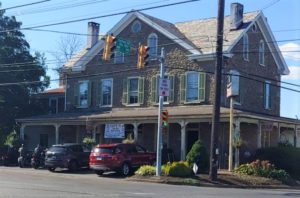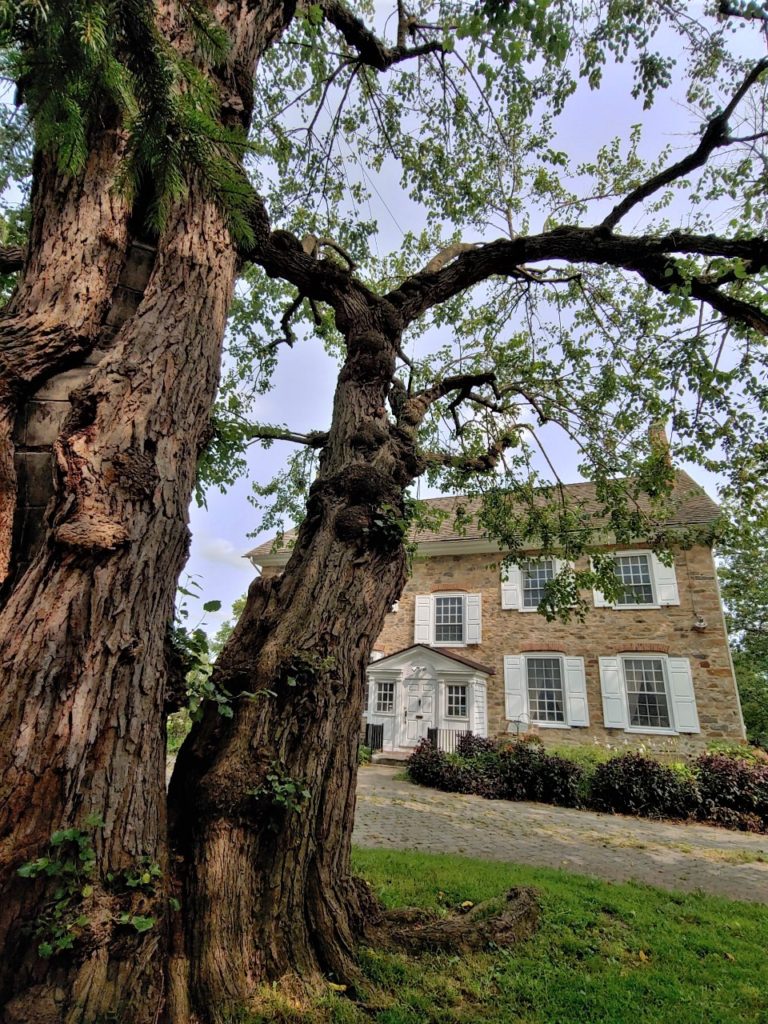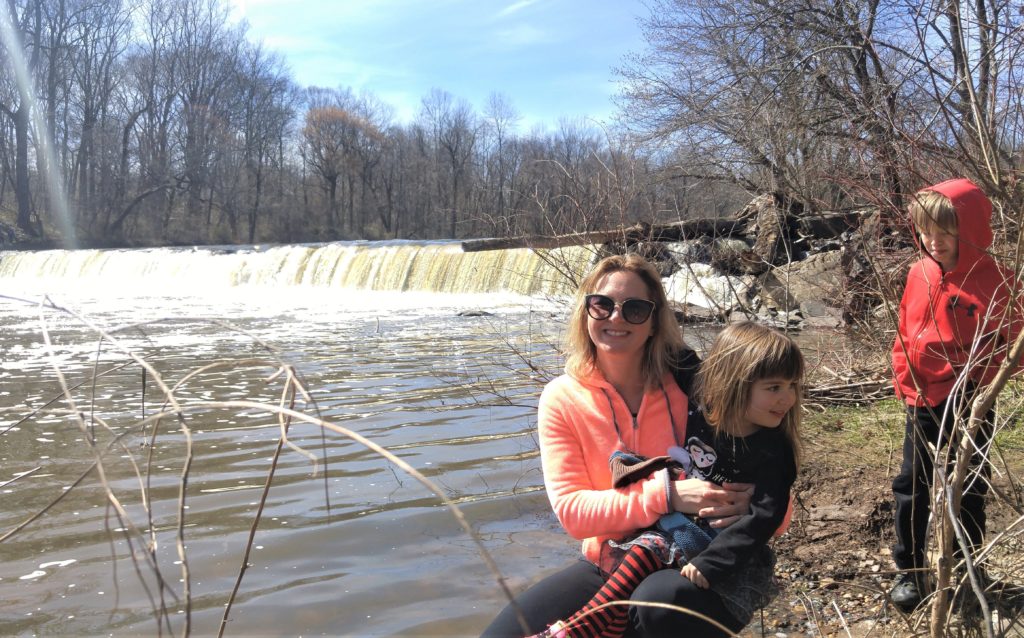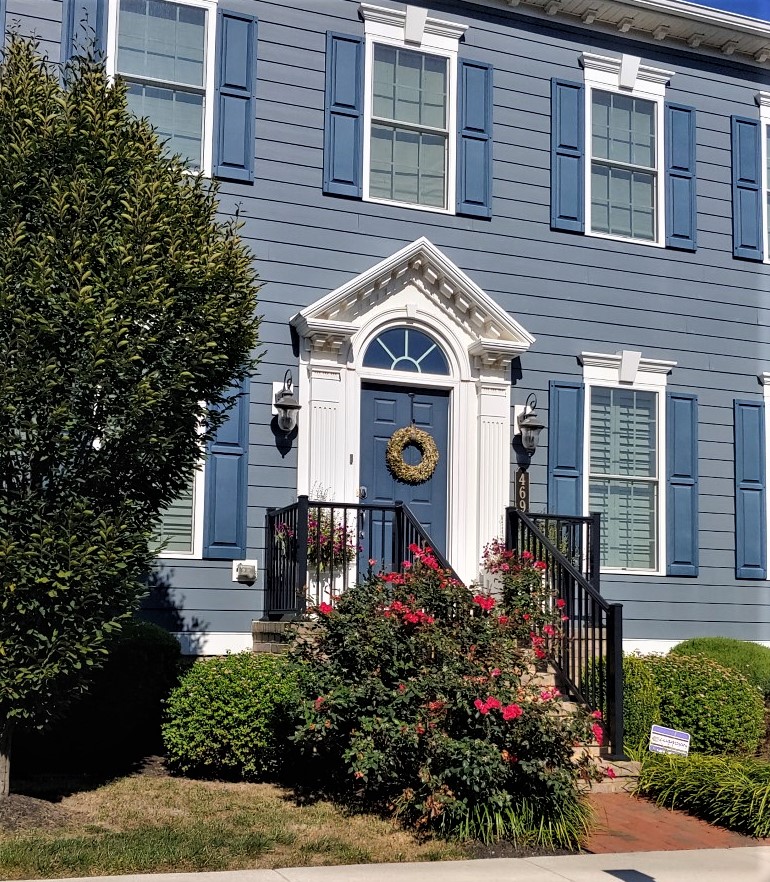Stories behind Gardenville and other place names.
The first time I roared up the steep hill on Durham Road (Route 413) to a traffic light at the crest, I noticed the name at the intersection. Gardenville. You hardly ever catch a green there. So you stop, look around and wonder, “Where’s the garden?” There were no signs of veggies or peonies reaching for the sky. All I noticed were parking lots, the old Gardenville Hotel, a pet store and a pizzeria. The light changed and off I sped.

Recently, I returned for a closer look. What I learned is Gardenville started life in 1732 as the Sign of the Plough in Plumstead Township. An ale house at the intersection of Durham and Point Pleasant Pike attracted farmers. Besides the brew, it offered an axiom: “He who by the Plough would thrive/Himself must either hold or drive.”
Later local immigrants decided to honor Plumstead’s first settler Thomas Browne by naming the neighborhood “Brownsville”. When Charles Price bought the ale house and renamed it Prices Tavern, that became the town designation. That lasted for decades until Feb. 27, 1856 when a post office opened at the intersection. The feds instructed postmaster John Schaffer to find a new name other than Prices Tavern or Brownsville. The latter happened to be the name of another village in Upper Makefield. Postal confusion would occur.
What to do?
After a consensus couldn’t be reached, someone piped in, “Why not ‘Gardenville’? After all, who didn’t admire Mrs. Schaffer’s flower garden?” By gosh, you’re right! It was unanimous. The village henceforth would be called Gardenville. The feds were delighted.
The town with no name
For almost 200 years, Morrisville in Lower Bucks didn’t have an official name. Eventually it adopted that of a man who ended up in debtor’s prison.

Let’s backtrack.
In 1624, the Dutch West India Company operated a trading post for three years within the future municipality. It wasn’t until 1679 that John Wood became the first white inhabitant. He bought the area from Sir Edmund Andros, the region’s British governor. Wood didn’t think a name was needed. It wasn’t until a ferry service to Trenton was established by Patrick Colvin in 1722 that people started referring to the area as Colvins Ferry or Crewcorne for a cluster of English homes or the Falls of the Delaware. The latter are rapids between Trenton and the edge of town separating the river’s ocean-fed estuary from its fresh water upper run. Fifty years would pass in the unnamed town which was becoming famous. During the American Revolution, a local mansion known as Summerseat was George Washington’s headquarters before the famed attack on Trenton. After the war, the town almost became Washington, D.C. That effort led by Philadelphia banker Robert Morris failed by the slimmest margin in Congress which preferred a site in Virginia.
It wasn’t until 1804 that town folk finally got around to incorporating under a name suggested by the new post office – Morrisville. Seemed a good fit. Morris owned most of the area including a grist mill, rolling mill, tobacco mill, hat factory and Summerseat. The banker’s Philadelphia-based company thrived exporting tobacco to France. It also engaged in the lucrative slave trade.
Morris, who signed the Declaration of Independence and single-handedly financed the American Revolution at great personal risk, began to face economic hardship after Thomas Jefferson, U.S. ambassador to France, shut down Morris’ tobacco imports to the king in 1785. Later circumstances and bad business decisions left Morris unable to pay his debts for which he was imprisoned in Philadelphia in 1798. Freed three years later, he remained impoverished and died and was buried in Philadelphia in 1804. His legacy as one of the nation’s founders lives on in a statue in the heart of Morrisville.
Indian heritage expressed in our rivers
Bucks County is home to two interior rivers. Most familiar is Neshaminy Creek flowing from Upper Bucks to Lower Bucks where it joins the Delaware in Croydon. The creek’s name is a Lenape Indian term translated as “the place where you drink twice”. Linguists later defined the location as near Chalfont where two fresh water springs enter the Neshaminy

The second largest stream is Tohickon Creek feeding Lake Nockamixon. It flows easterly through Tinicum Township to the Delaware River at Point Pleasant. Most historians believe “To-hick-han” is Lenape for “the stream over which we pass by means of a bridge of drift-wood.” Others insist it means “deer-bone creek.”
Apparently map makers at the U.S. Geological Survey slipped up early on and marked the waterway as “Hickon Creek.” Maybe the fuss over what the name means got to them. Lenape descendants who might have settled the matter were long gone to Oklahoma.
***
Sources include “Place Names in Bucks County” by George MacReynolds published by the Bucks County Historical Society in 1942; the “Robert Morris Papers” at the Library of Congress in Washington, and “The Founders & Slavery – Contradictions of Liberty” posted by Marywood College in 2015 at https://foundersandslavery.wordpress.com/2015/04/19/updated-robert-morris/.

